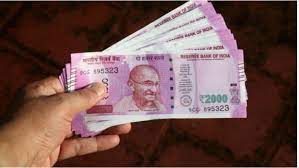Shaktikanta Das says the withdrawal of the Rs 2,000 note is a temporary measure at the RBI MPC meeting
Shaktikanta Das, the Governor of the Reserve Bank of India (RBI), said that the decision to abolish the Rs 2,000 note is just a temporary measure at the Monetary Policy Committee (MPC) meeting that was conducted on Thursday, August 10.
Das stressed that when the withdrawal procedure is through, there would be a plentiful amount of liquidity in the economy. The RBI declared its decision to phase out the circulation of banknotes with a face value of Rs 2,000 earlier this year in May, with a deadline of September 30 for the exchange of all such notes. He characterized this action as a temporary measure to absorb the extra liquidity brought on by the resumption of Rs 2,000 notes.
The RBI also said that beginning with the week beginning August 12, banks would be obliged to maintain an extra Cash Reserve Ratio (CRR) of 10% on the increase in their Net Demand and Time Liabilities (NDTL) between May 19 and July 28.
The CRR stands for the percentage of deposits that banks must keep on hand at the central bank. However, the banks do not get any income on their CRR balances kept with the RBI.
According to the research, up till June 2023, almost 72% of the withdrawn Rs 2,000 bills were deposited or exchanged at banks. Additionally, the RBI said that day that it has decided to maintain the repo rate at 6.5% for a third straight period.
Das said, “The MPC has decided to take a watchful approach and evaluate the emerging circumstances. In order to make sure that the headline inflation stays within the target range of 4%, the RBI has also decided to maintain its accommodating approach.
The crucial policy rate at which the RBI lends financing to banks is the repo rate. In February of current year, it had increased by 25 basis points (bps). The rate was then maintained by the central bank at its meetings in April and June.
According to Das, “The cumulative rate hike of 250 bps since FY23 is making its impact felt across the economy.” He also emphasized that India has had significant growth and has contributed more than 15% to global growth as a consequence of its sound macroeconomic fundamentals.







